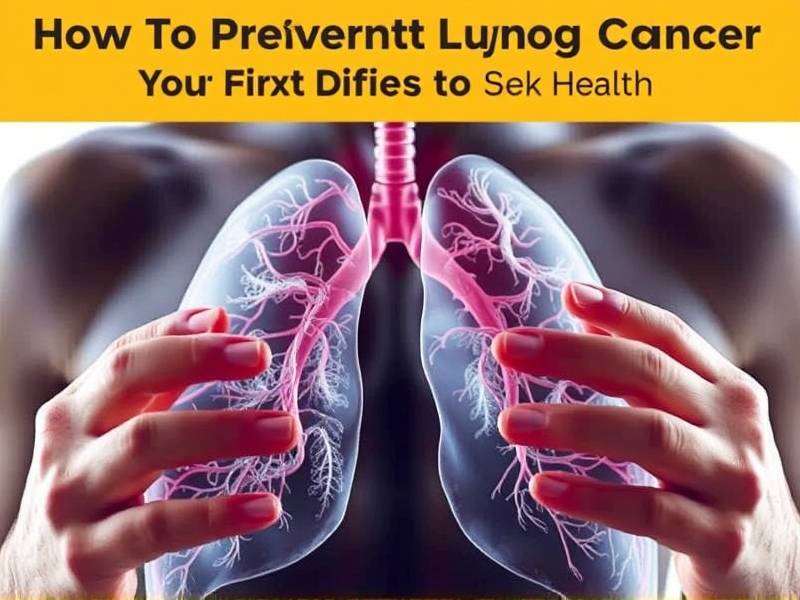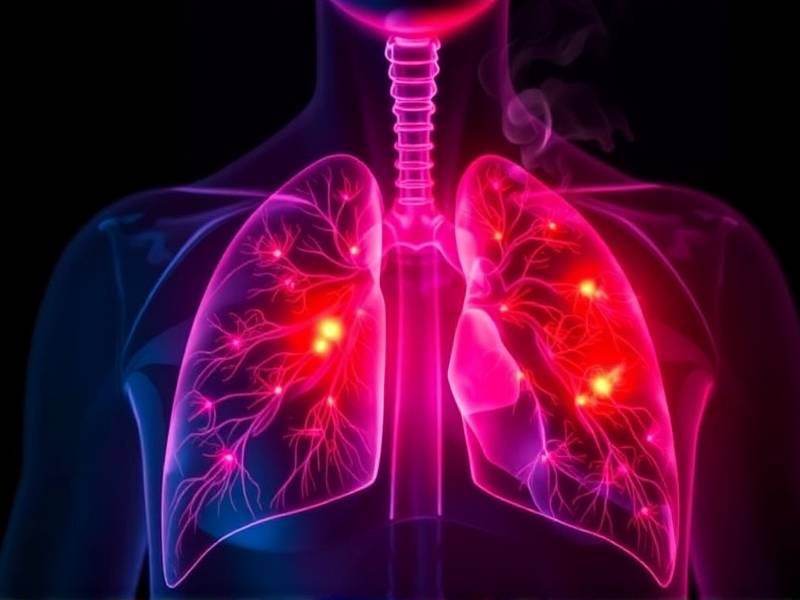How to Prevent Lung Cancer After Quitting Smoking: A Guide for Better Health
Understanding the Risks
Quitting smoking is a monumental step towards improving your health, and one of the most significant benefits is the reduction in the risk of developing lung cancer. While it's impossible to eliminate all risks associated with smoking, there are several proactive measures you can take to further safeguard your lungs after you've quit.
The Importance of Early Detection
Early detection is key in the fight against lung cancer. Regular check-ups and screenings can help identify any potential issues at an early stage, when treatment is most effective. It's essential to stay vigilant and informed about your health.

Adopting a Healthy Lifestyle
-
Balanced Diet

- Incorporate a variety of fruits, vegetables, whole grains, and lean proteins into your diet.
- Foods rich in antioxidants, such as berries and green leafy vegetables, can help protect your lungs.
-
Regular Exercise
- Engage in moderate-intensity aerobic exercise for at least 150 minutes per week.
- Exercise improves lung function and strengthens your immune system.
-
Maintain a Healthy Weight
- Excess weight can increase the risk of developing various cancers, including lung cancer.
- Consult with a healthcare professional for guidance on maintaining a healthy weight.
Avoiding Harmful Substances
-
Secondhand Smoke
- Stay away from environments where secondhand smoke is present.
- Secondhand smoke contains many of the same harmful chemicals as direct smoke exposure.
-
Air Pollution
- Limit exposure to air pollution by staying indoors during high-pollution days.
- Use air purifiers in your home to improve indoor air quality.
Monitoring Your Health
-
Symptom Awareness
- Pay attention to any persistent coughs, shortness of breath, chest pain, or coughing up blood.
- These symptoms could be signs of lung cancer or other respiratory conditions.
-
Regular Screenings
- Discuss with your doctor whether you should undergo low-dose CT scans if you're at high risk for lung cancer.
- High-risk individuals often include those who have smoked heavily for many years or have other risk factors.
Embracing Technology
-
Mobile Apps and Wearables
- Utilize mobile apps that track your smoking cessation progress and provide tips for staying smoke-free.
- Wearables can monitor your heart rate and activity levels, helping you maintain a healthy lifestyle.
-
Online Resources
- Access reputable websites that offer support and information on quitting smoking and maintaining good health post-cessation.
Seeking Professional Help
-
Support Groups
- Join support groups where you can share experiences with others who have quit smoking.
-
Therapy Options
- Consider therapy or counseling if you're struggling with nicotine withdrawal or emotional challenges related to quitting smoking.
Conclusion
Quitting smoking is just the beginning of a journey towards better health. By adopting a healthy lifestyle, avoiding harmful substances, monitoring your health closely, embracing technology, seeking professional help when needed, and staying informed about lung cancer prevention strategies, you can significantly reduce your risk of developing this deadly disease. Remember that every step you take towards better health is a step towards a longer life filled with vitality and joy.
